Transporters
Avery Hamilton; Avalon Marker; Shelby Pickett; and Jim Hutchins
Chapter under construction. This is the first draft. If you have questions, or want to help in the writing or editing process, please contact hutchins.jim@gmail.com.
- Active Transport: Primary/secondary
- Active Transport: The two types of active transports are Primary and Secondary. Primary active transport is defined by the direct use of ATP hydrolysis to supply needed energy to transport ions against their concentration gradient. Secondary active transport uses ATP indirectly by utilizing the energy created (high electrochemical concentration) resultant of primary active transport activity to move one class of ion against its gradient.
- Antiporter/Exchangers: Transports ions in opposing physical direction
- Examples of Antiporters:
- Sodium-Calcium Exchanger (NCX): Found in neurons, this antiporter exchanges three sodium ions for one calcium ion, playing a crucial role in maintaining calcium homeostasis.
- Sodium-Hydrogen Exchanger (NHE): Neuronal NHEs exchange sodium ions for protons, contributing to intracellular pH regulation and cell volume control.
- Sodium-Potassium Pump (Na /K Pump) or Sodium-Potassium ATPase: actively transports three sodium ions out of the cell and two potassium ions into the cell, maintaining the resting membrane potential. Functions akin to a proton pump (atp as energy – Proton ATPase) in plant cells.
- Examples of Antiporters:
- Symport/Cotransporters: Cotransports ions in the same physical direction.
- Examples of Cotransporters:
- Sodium-Glucose Co-transporter (SGLT): SGLTs facilitate transport of sodium and glucose across the cell membrane. In some neurons, SGLTs facilitate the co-transport of sodium ions (driver) and glucose across the cell membrane. Glucose is high in concentration inside, thus glucose outside the cell moves inward against its gradient in coordination with driver (Na )
- Excitatory Amino Acid Transporters (EAATs): EAAT1-5 are responsible for the uptake of glutamate
- Sodium-Chloride Symporter (NCC): NCC co-transports sodium and chloride ions across the cell membrane, contributing to ion homeostasis.
- GABA Transporters (GATs): Neuronal GATs (GAT-1 to GAT-4) reuptake of gamma-aminobutyric acid (GABA) from the synaptic cleft.
- Dopamine Transporter (DAT): reuptake of dopamine from the synaptic cleft.
- Norepinephrine Transporter (NET): reuptake of norepinephrine from the synaptic cleft.
- Serotonin Transporter (SERT): reuptake of serotonin from the synaptic cleft.
- Examples of Cotransporters:
Introduction
Transporters are specialized proteins that facilitate the movement of neurotransmitters, ions, and other molecules across the neuronal membrane. When thinking about how transporters operate, we can imagine the neuronal membrane as a busy street with traffic flowing in multiple directions. Transporters act as street lights that help direct the flow of traffic. Transporters are essential for maintaining balance within a cell and preventing congestion. The location of these “traffic lights” depend on their type and function. When we discuss different types of transporters we can divide them into three different categories based on how they function. There are uniport, antiport, and symport transporters. Below we will explain how they differ from one another and what type of transport (passive or active) they use to execute cellular functions.
Uniport Transporter
They facilitate the movement of a single molecule or ion across the plasma membrane. This process of transport is accomplished without coupling to the transport of another molecule (Biology Online, 2022). Uniporters are normally ion channels or carrier proteins. Regardless of what is used, the purpose of a uniporter is to move one molecule or ion from an area of high concentration to an area of low concentration. The amazing thing about this process is that it is done through passive transport. Which means that uniport transporters are not using adenosine triphosphate (ATP), to move molecules across the plasma membrane.
When we discuss uniport transporters within the neuronal membrane we are giving a standard definition of this type of transport. There is a large variety of uniport transporters but for the sake of this chapter we will only briefly discuss glucose transporters. There are actually 14 different types of glucose transporters (GLUT). Each has their own distinct subcellular localizations, substrate specificities, and transport kinetics (“Solute Carrier Transporters: The Metabolic Gatekeepers of Immune Cells,” 2019). We won’t be going into great detail about each glucose transporter for the sake of maintaining some simplicity regarding uniport transporters. To overall simplify the purpose behind glucose transporters is that they enable and facilitate the movement of glucose into the cells for use.The important takeaway is that uniport transport is a passive process and their function can easily be remembered if we think about glucose transporters.
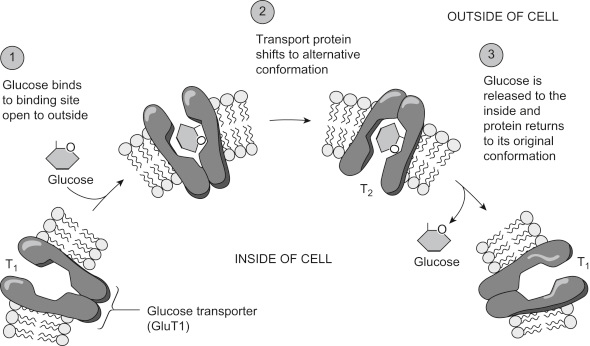
Antiport Transporter
The movement of two or more ions or molecules that are moving in opposite directions across the plasma membrane is facilitated by antiporter transporters. Antiporters are able to complete this process by using secondary active transport. These transporters are moving one molecule out of the cell while also bringing another molecule or ion into the cell. This is accomplished by utilizing the electrochemical gradients that are formed during primary active transport.
Some examples of antiport transporters are:
- Sodium-Calcium Exchanger (NCX): Found in neurons, this antiporter exchanges three sodium ions for one calcium ion, playing a crucial role in maintaining calcium homeostasis.
- Sodium-Hydrogen Exchanger (NHE): Neuronal NHEs exchange sodium ions for protons, contributing to intracellular pH regulation and cell volume control.
- Sodium-Potassium Pump (Na /K Pump) or Sodium-Potassium ATPase: actively transports three sodium ions out of the cell and two potassium ions into the cell, maintaining the resting membrane potential. Functions akin to a proton pump (atp as energy – Proton ATPase) in plant cells.
- Edit: Add vesicular acetylcholine transporter (vAChT)
Symport Transporter
As two or more ions or molecules are being moved in the same direction either into or out of the cell this task is carried out by a Symporter transporter. Symporters rely on secondary active transport to carry out their objectives. Essentially, they are getting energy from the electrochemical gradient to perform their tasks. Below is a list of different symport transporters.
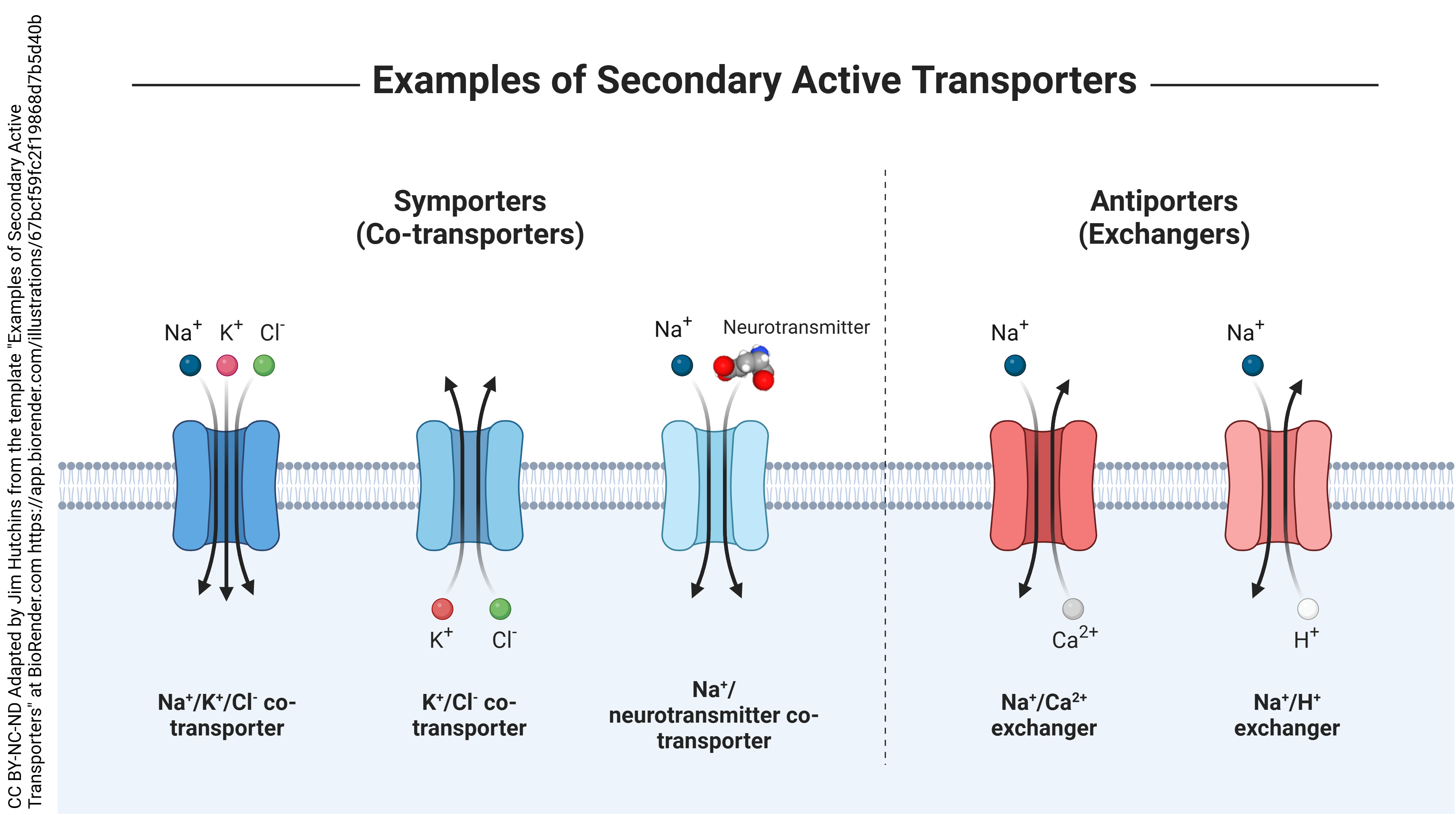
- Symport/Cotransporters: Cotransports ions in the same physical direction.
- Examples of Cotransporters:
- Sodium-Glucose Co-transporter (SGLT): SGLTs facilitate transport of sodium and glucose across the cell membrane. In some neurons, SGLTs facilitate the co-transport of sodium ions (driver) and glucose across the cell membrane. Glucose is high in concentration inside, thus glucose outside the cell moves inward against its gradient in coordination with driver (Na )
- Excitatory Amino Acid Transporters (EAATs): EAAT1-5 are responsible for the uptake of glutamate
- Sodium-Chloride Symporter (NCC): NCC co-transports sodium and chloride ions across the cell membrane, contributing to ion homeostasis.
- GABA Transporters (GATs): Neuronal GATs (GAT-1 to GAT-4) reuptake of gamma-aminobutyric acid (GABA) from the synaptic cleft.
- Dopamine Transporter (DAT): reuptake of dopamine from the synaptic cleft.
- Norepinephrine Transporter (NET): reuptake of norepinephrine from the synaptic cleft.
- Serotonin Transporter (SERT): reuptake of serotonin from the synaptic cleft.
- Examples of Cotransporters:
Now we have covered the different categories that neuronal membranes can fall into. We talked about uniport transport, specifically glucose transporter. and mentioned the function of both antiporters and symporters. Even though it is great to get a written understanding of how these processes work, it is always a good practice to see them in motion. Below is a video that helped better articulate different transporters and what type of transport they use to facilitate movement of substances across the plasma membrane
Passive Transport
Passive transport is a natural process in which no ATP is required to facilitate movement. Small ions and molecules are able to move freely through the plasma membrane which is selectively permeable. To better understand how this phenomenon occurs we need to understand the basic structure of the phospholipid bilayer. It is composed of two layers that have phospholipid heads which are hydrophobic and with two fatty acid hydrophilic tails. The heads of the phospholipid bilayer or polar, meaning they repel charged ions that try to pass through. Fortunately, passive transport allows certain molecules to pass through the phospholipids bilayer because they are lipid soluble.

Simple Diffusion
Simple diffusion is a process in which molecules move from an area of high concentration to an area of low concentration. The rate of diffusion is dictated by a few different factors. For an increased rate of diffusion a cell’s surface area and concentration gradient factored in. Whereas, if the rate of diffusion was decreased it would depend on the thickness of the cell wall and the molecule’s weight.
Regardless of how fast or slow diffusion takes place, one thing remains the same. That simple diffusion is a naturally passive process. An example of molecules that utilize this type of diffusion would be respiratory gases like oxygen and carbon dioxide. Or steroid hormones such as testosterone, estrogen, progesterone. E.g.. When thinking of how these molecules move down their concentration gradient we can think of a ball rolling down a hill. No force is required for the ball to move, it is a passive process, much like these lipid soluble molecules.
Osmosis
Even though osmosis is considered simple diffusion it is unique in the fact that it is only for water. Osmosis is when water moves from an area of lower concentration of solutes to an area of higher concentration of solutes. The main agenda of osmosis is to create equilibrium within cells. The water molecules are moving through the plasma membrane to create an equal number of solute on both sides of the cellular membrane. This is extremely important for the overall health and structure of a cell.
Facilitated Diffusion
The process of facilitated transport is required for moving materials from areas of high concentration to low concentration with the assistance of protein transporters. Molecules such as salts and glucose depend on proteins in the plasma membrane facilitate movement across the hydrophobic part of the neuronal membrane. For additional information on how facilitated diffusion plays a role on maintaining cellular regulation please see Overview of Membrane Channels, transporters, and Pumps. Overview of Membrane Channels, transporters, and Pumps.
Active Transport
When molecules or ions are having to move across their concentration gradient they require energy to perform this task. Imagine the ball we spoke about earlier when we discussed passive transport. If that same ball was to be sent up, it clearly wouldn’t be able to achieve this agenda without some kind of force helping it up the hill. Gravity is the enemy in this scenario. While let’s apply that thought process to who molecules and ions need to move from an area of lower concentration to a higher concentration gradient. This requires a great deal of energy or ATP (Adenosine triphosphate). Active transport is critical for regulating a cells function and maintains proper concentrations. Active transport achieves this job by two different ways:
Primary
Primary active transport is when transporters are utilizing ATP to move substances against the concentration gradient of the neuronal membrane. A key characterization of primary active transport is the use of specialized transport proteins (pumps). These pumps allows the cells to take ions or molecules from an areas of lower concentration to an area of higher concentration by the power hydrolysis of ATP. This is when ATP is broken down into ADP and an inorganic phosphate, which releases a burst of energy. This burst of energy gives the transporter the power to facilitate the movement of molecules from one side of the cellular membrane to the other. This form of diffusion is a natural phenomena, one of simple diffusion we see in passive transport Most notably for this type of transport is the sodium-potassium pump you likely heard about multiple times before this chapter or book. Primary active transport is essential for a cells various functions.
Secondary
This is the second type of active transport, which is indicated by its name In secondary active transport ATP is not directly used to move substance across the concentration gradient. Rather this form of active transport relays on electrochemical grades ends they were created from primary active transport. Typically, if not always, secondary active transporters are symporters and antiporters. This is how a cell is able to absorb nutrient.
List of Transporters and Their Role/ Way of Transport
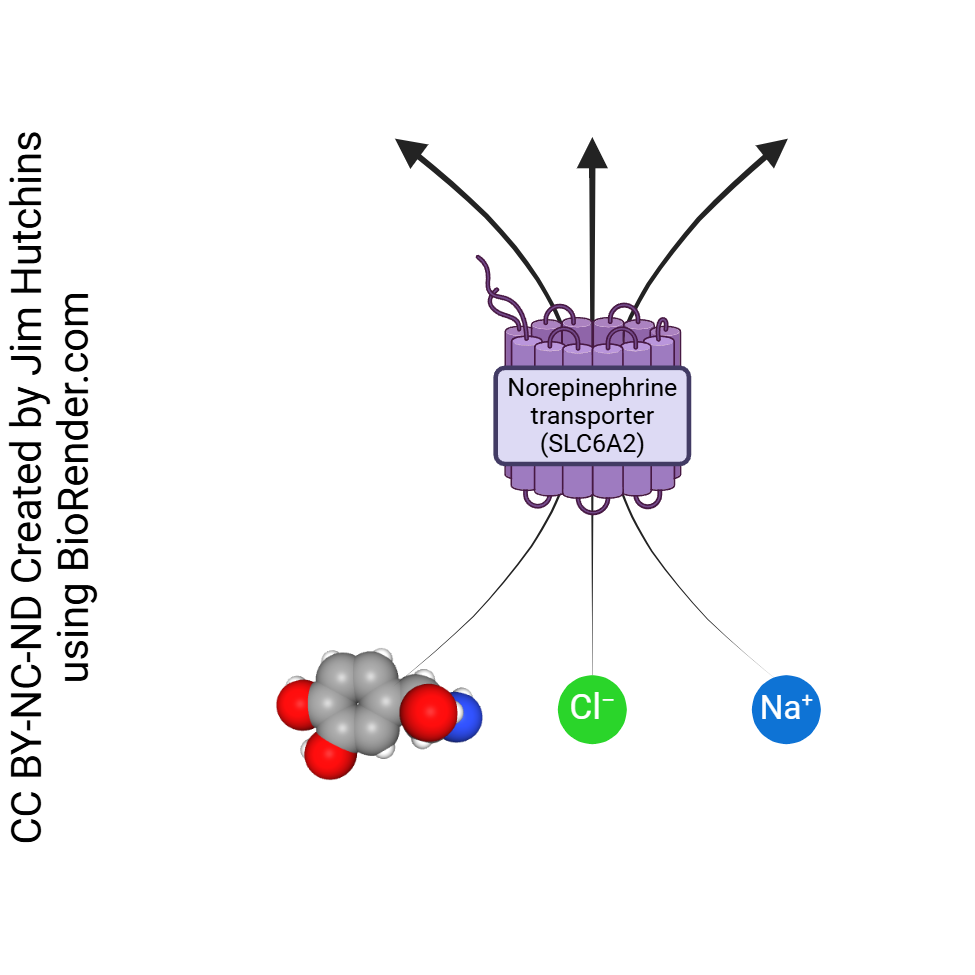
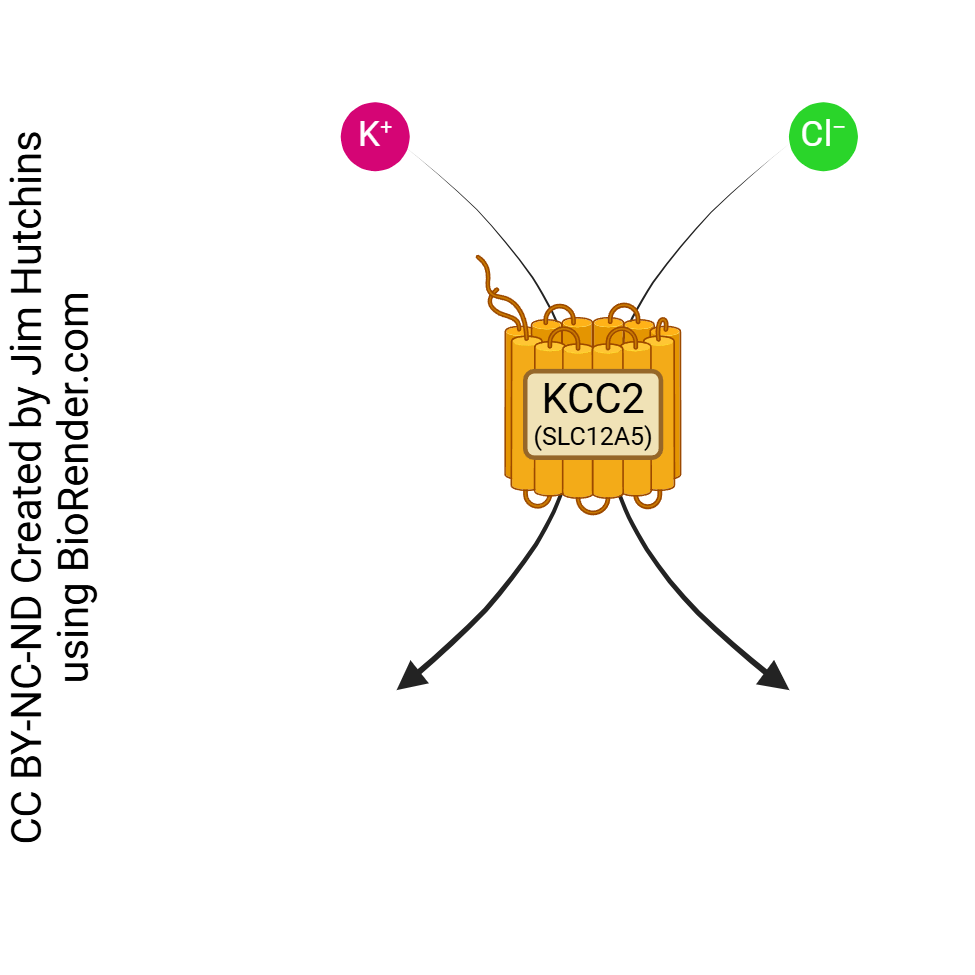
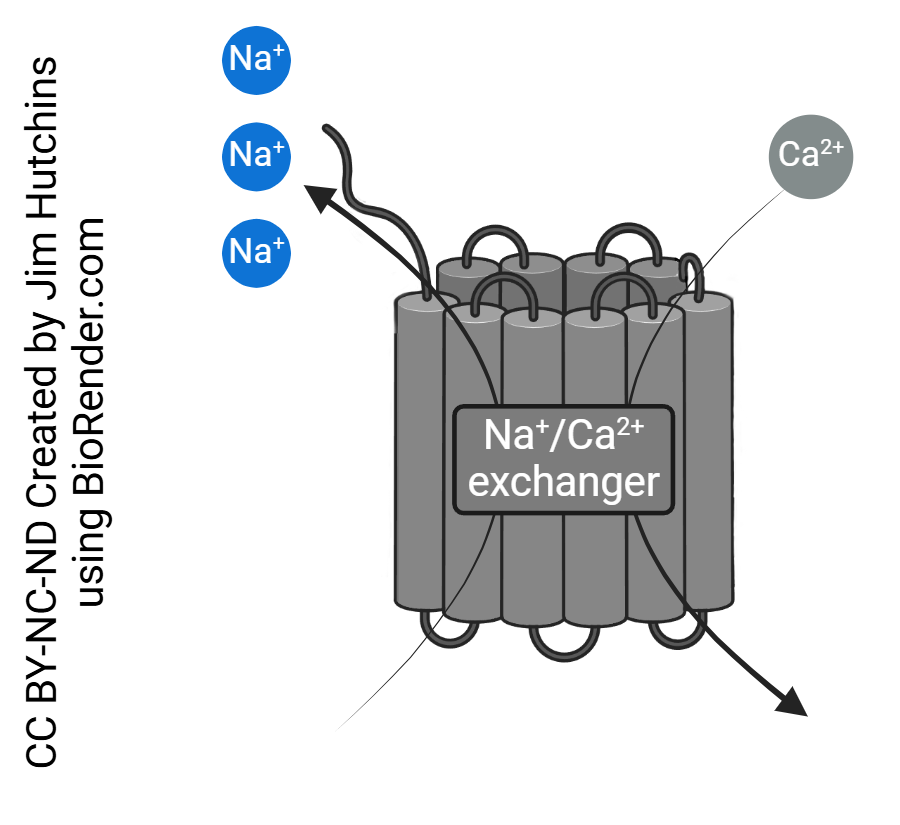
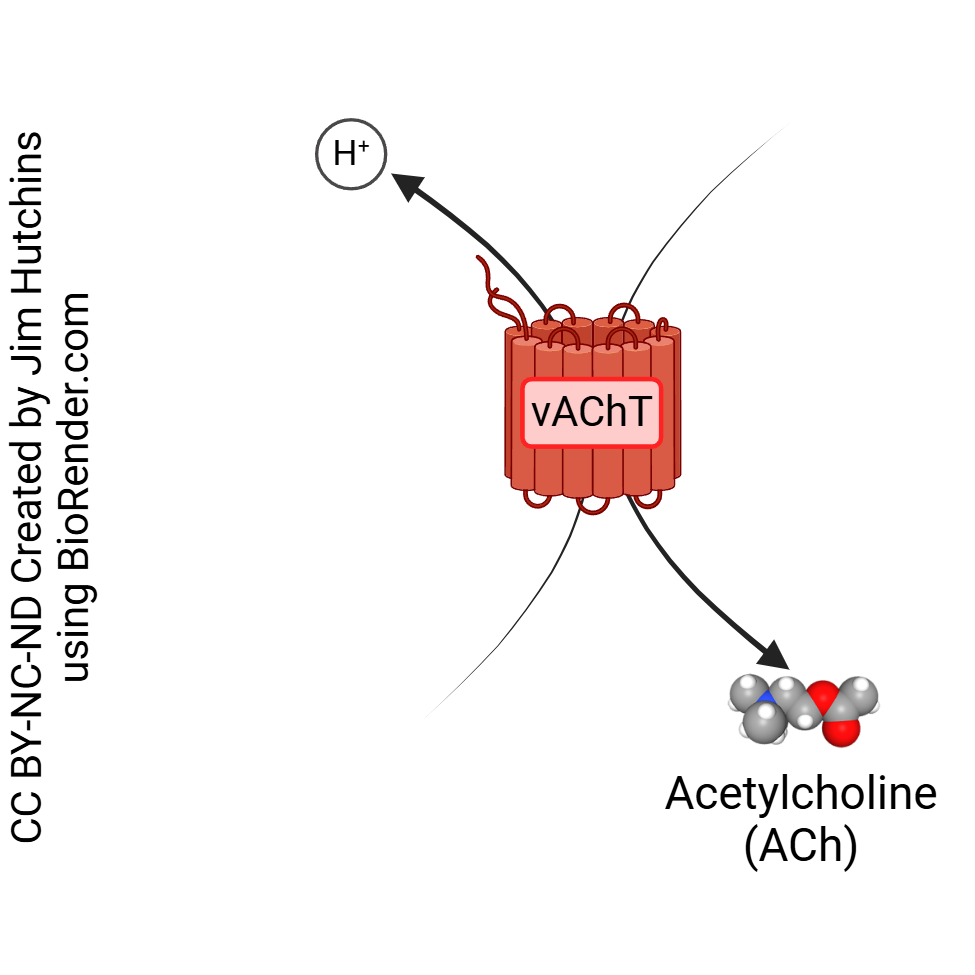
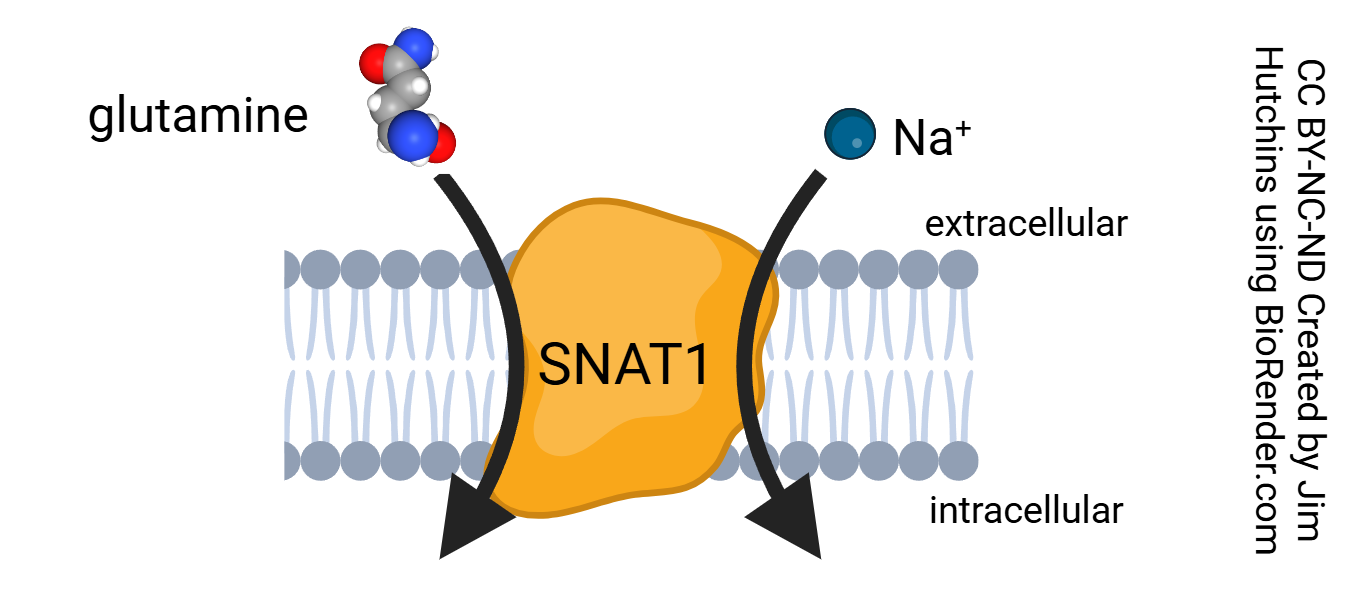
- Neurotransmitter Transporters
- Glutamate Transporters (EAAT1-5)
- Excitatory Amino Acid Transporters
- GABA Transporters (GAT1-4)
- Gamma-Aminobutyric Acid
- Dopamine Transporters (DAT)
- Dopamine reuptake
- Serotonin Transporters (SERT)
- Serotonin reuptake
- Norepinephrine Transporters (NET)
- Norepinephrine reuptake
- Glycine Transporters (GLYT1, GluT2)
- Glycine reuptake
- Acetylcholine Transporters (VAChT)
- Vesicular Acetylcholine Transporters
- Glutamate Transporters (EAAT1-5)
- Ion Transporters
- Sodium-Potassium Pump (Na /K -ATPase)
- Maintains resting membrane potential
- Calcium Pumps (PMCA, SERCA)
- Plasma membrane Ca^2 ATPase and Sarco/Endoplasmic Reticulum Ca^2 ATPase
- Chloride Transporters (KCC2, NKCC1)
- Potassium-Chloride Cotransporter 2 and Sodium-Potassium-Chloride Cotransporter 1
- Sodium-Potassium Pump (Na /K -ATPase)
- Glucose Transporters (GLUTs)
- GLUT1, GLUT3, GLUT4
- Facilitate glucose uptake in neurons
- GLUT1, GLUT3, GLUT4
- Monocarboxylate Transporters (MCTs)
- MCT1, MCT2, MCT4
- Transport lactate, pyruvate, and ketone bodies
- MCT1, MCT2, MCT4
- Amino Acid Transporters
- Excitatory Amino Acid Transporters (EAAT1-5)
- Glutamate and aspartate transport
- Neutral Amino Acid Transporters (e.g., LAT1, LAT2)
- Transport leucine, isoleucine, valine
- Cationic Amino Acid Transporters (CATs)
- Transport arginine, lysine, ornithine
- Excitatory Amino Acid Transporters (EAAT1-5)
- Vesicular Transporters
- Vesicular Monoamine Transporters (VMAT1, VMAT2)
- Package monoamines into vesicles
- Vesicular Glutamate Transporters (VGLUT-3_
- Package glutamate into vesicles
- Vesicular GABA Transporters (VGAT)
- Package GABA into vesicles
- Vesicular Monoamine Transporters (VMAT1, VMAT2)
References:
https://www.ncbi.nlm.nih.gov/books/NBK547718/
https://uen.pressbooks.pub/expertneuro/chapter/the-different-types-of-membrane-channels/
https://www.biologyonline.com/dictionary/uniport
Media Attributions
- IMG_5236 © Bernard Thorens, in xPharm: The Comprehensive Pharmacology Reference , 2007
- Examples of Secondary Active Transporters © BioRender adapted by Jim Hutchins is licensed under a CC BY-NC-ND (Attribution NonCommercial NoDerivatives) license
- Norepinephrine transporter © Jim Hutchins is licensed under a CC BY-NC-ND (Attribution NonCommercial NoDerivatives) license
- KCl Symporter © Jim Hutchins is licensed under a CC BY-NC-ND (Attribution NonCommercial NoDerivatives) license
- Sodium-Calcium Exchanger © Jim Hutchins is licensed under a CC BY-NC-ND (Attribution NonCommercial NoDerivatives) license
- Vesicular Acetylcholine Transporter © Jim Hutchins is licensed under a CC BY-NC-ND (Attribution NonCommercial NoDerivatives) license
- Symport by the sodium-coupled neutral amino acid transporter © Jim Hutchins is licensed under a CC BY-NC-ND (Attribution NonCommercial NoDerivatives) license

